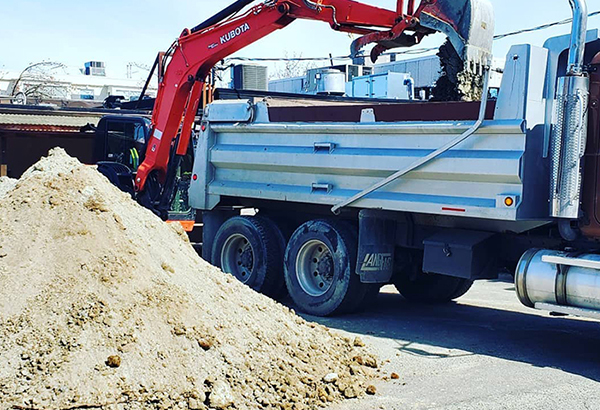 Fully Licensed and Insured
Fully Licensed and Insured Request an Oil Tank Scan
Request an Oil Tank Scan Request a Free Estimate
Request a Free Estimate

Contamination caused by hidden underground oil tanks is becoming an increasingly common and costly problem for homeowners in British Columbia. At the heart of the issue are forgotten or neglected underground oil tanks left over from previous generations when oil was the primary heating source for most furnaces in the province. However, after 1960 this all changed when oil was replaced by natural gas or electric heating.
Without a detailed plan for their safe removal, many retired underground oil storage tanks (UST) were simply left in place. Fast-forward sixty years and these UST are dangerously past their life expectancy with corrosion and damage significantly increasing the risk of tank rupture and soil contamination.
Tank rupture is a worst-case scenario for homeowners. The cost of tank removal and a contaminated soil remediation company can quickly run into tens of thousands of dollars depending on the leak’s extent and the cleanup’s complexity. However, the financial and environmental cost of not cleaning contaminated soil can be far greater.
Contaminated soil is not only a danger to plants and wildlife but can also seep into groundwater, polluting nearby water sources, drinking water, and vegetation with harmful toxins. More significant leaks also have the potential to spread beyond your lot, affecting neighbouring properties, which you would be financially responsible for as well. The presence of an underground oil storage tank can affect your ability to sell your home, obtain insurance, or renew a mortgage, due to its financial risk.
New technology has made identifying the existence and location of an underground oil tank easier than ever, and in many cases, once the tank is located and safely removed, the job is over. But not always.
Because of the danger of contaminated soils present, soil testing is a standard part of the oil tank removal process. The Ministry of Environment has set strict regulations on the acceptable level of Extracted Petroleum Hydrocarbons; anything over 1000 EPH is legally considered contaminated and requires soil remediation. If you are below that amount, you can proceed with backfilling.
If third-party testing during oil tank removal has determined your soil has been contaminated by leaking oil, you’ll need to have all the contaminated soil removed to prevent further damage and to meet environmental regulations. The City of Vancouver recommends obtaining quotes from several contaminated soil remediation companies before proceeding with the work.
Because each case of soil contamination is unique to the property, it is difficult for a soil remediation company to give an accurate quote without investigating the leak. Buyers should be wary of a company that attempts to provide an estimate after a cursory inspection.
Upon completion of your contaminated soil remediation, the company which completed the service will provide you with a copy of your oil tank and contaminated soil removal report and forward another copy to the appropriate governing body.